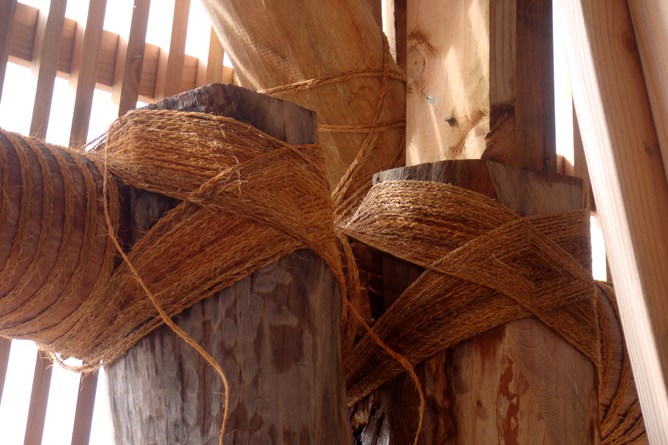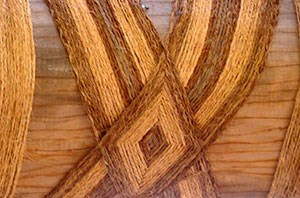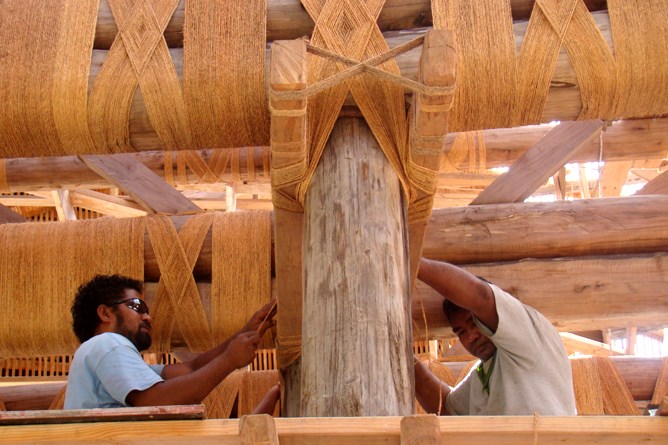
NPS 
NPS The coconut is the most useful of all plants in Samoa. The tree provides a wide range of useful products, and nearly all its parts except its roots are used. Meat of the green nut is eaten raw or grated and used as a basic ingredient in a number of dishes. Grated coconut, when compressed in a strainer, produces a whitish liquid known as "coconut cream," which is also a vital part of many Samoan recipes. Water in the fruit is used as a drink, and the nuts can be carried on bonito fishing expeditions as a water source as well as food.
The shell of the fruit is used for utensils for eating or drinking, or scooping. It is also used to hold and store dyes, fish lines, and other small items. Leaves are woven into baskets, house blinds, food trays, fans, hats, floor mats, sandals, toys, and units of thatch. Fibers from the nut's outer husk are twisted into a very strong and durable cordage, called sennit, and used in all house and outrigger lashings. Sennit is used to lash outriggers to canoes as saltwater did not cause the rope to deteriorate or weaken. The husk of the fruit may also be burned as fuel or its fibers separated and used as a strainer for kava and other liquids. Its strong, heavy wood is used for some house components, headrests, rollers for canoes, cricket bats, and fuel. Kernels of the mature nut, when compressed in a strainer woven of hibiscus bark, produces oil, lolo, that Samoans use for a variety of cosmetic and medical purposes. It is used to groom the hair, oil the skin (on ceremonial occasions), and, since it is often scented with fragrant blossoms, it is used as a perfume or cologne. Swimmers oil their bodies for warmth, and lolo is used as a dressing for cuts and sores. 
NPS |
Last updated: February 28, 2015
